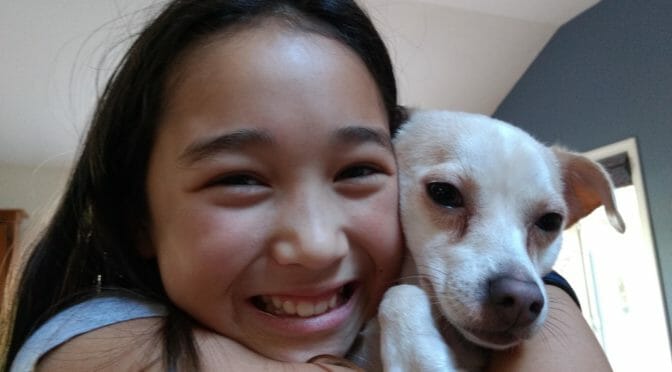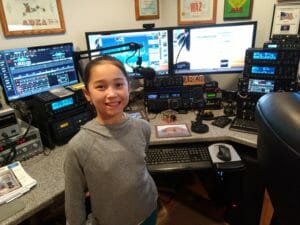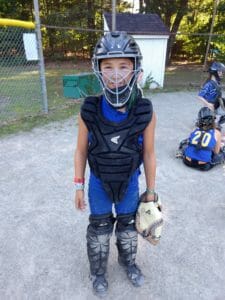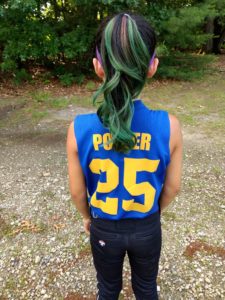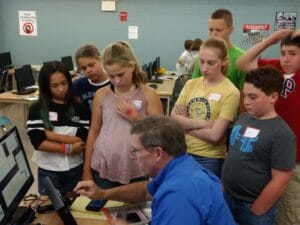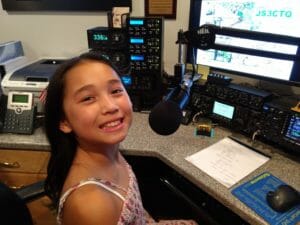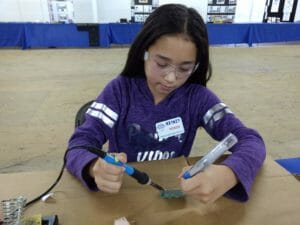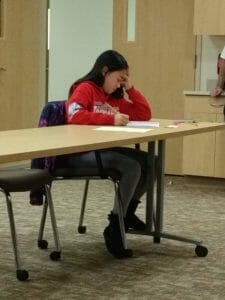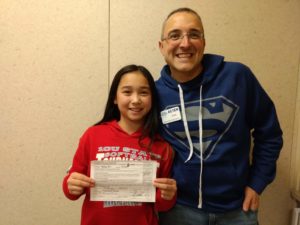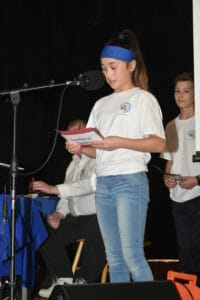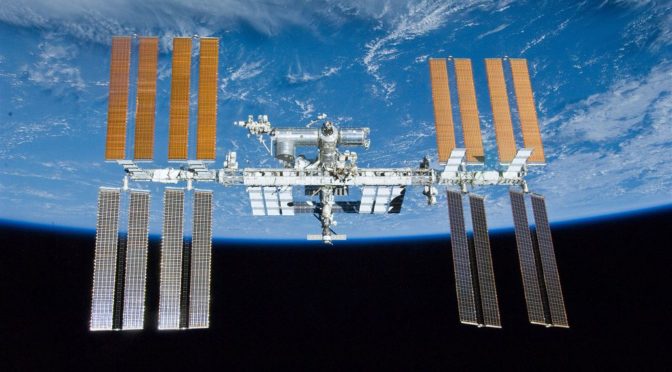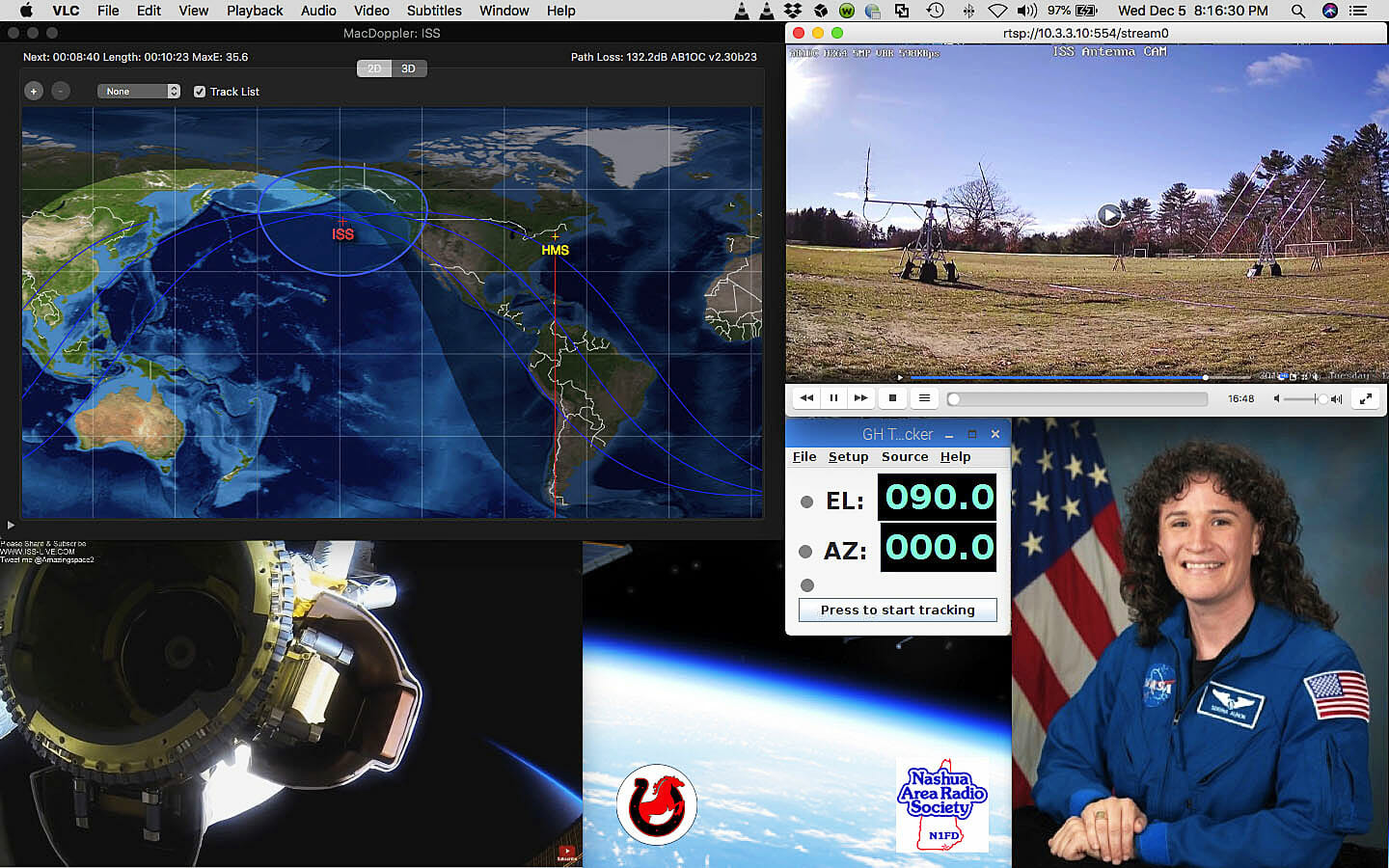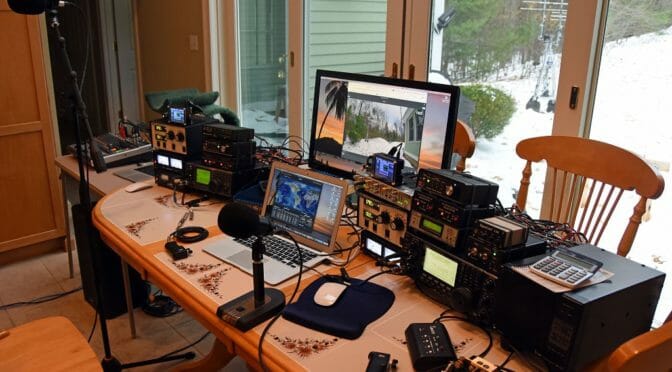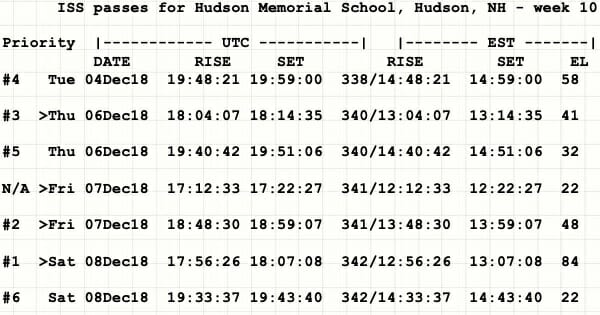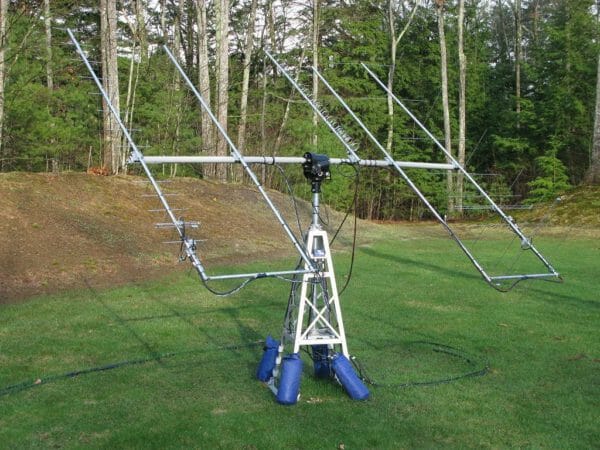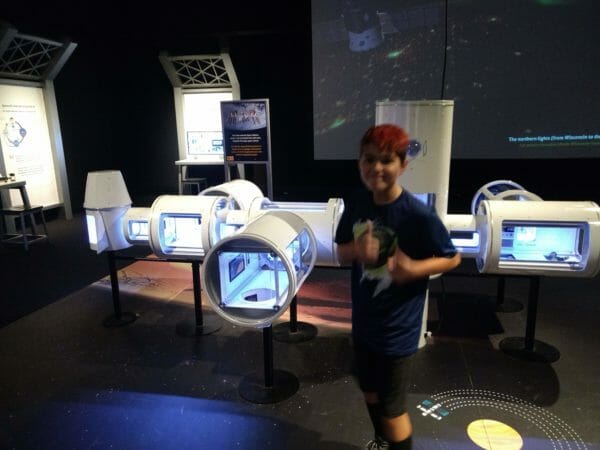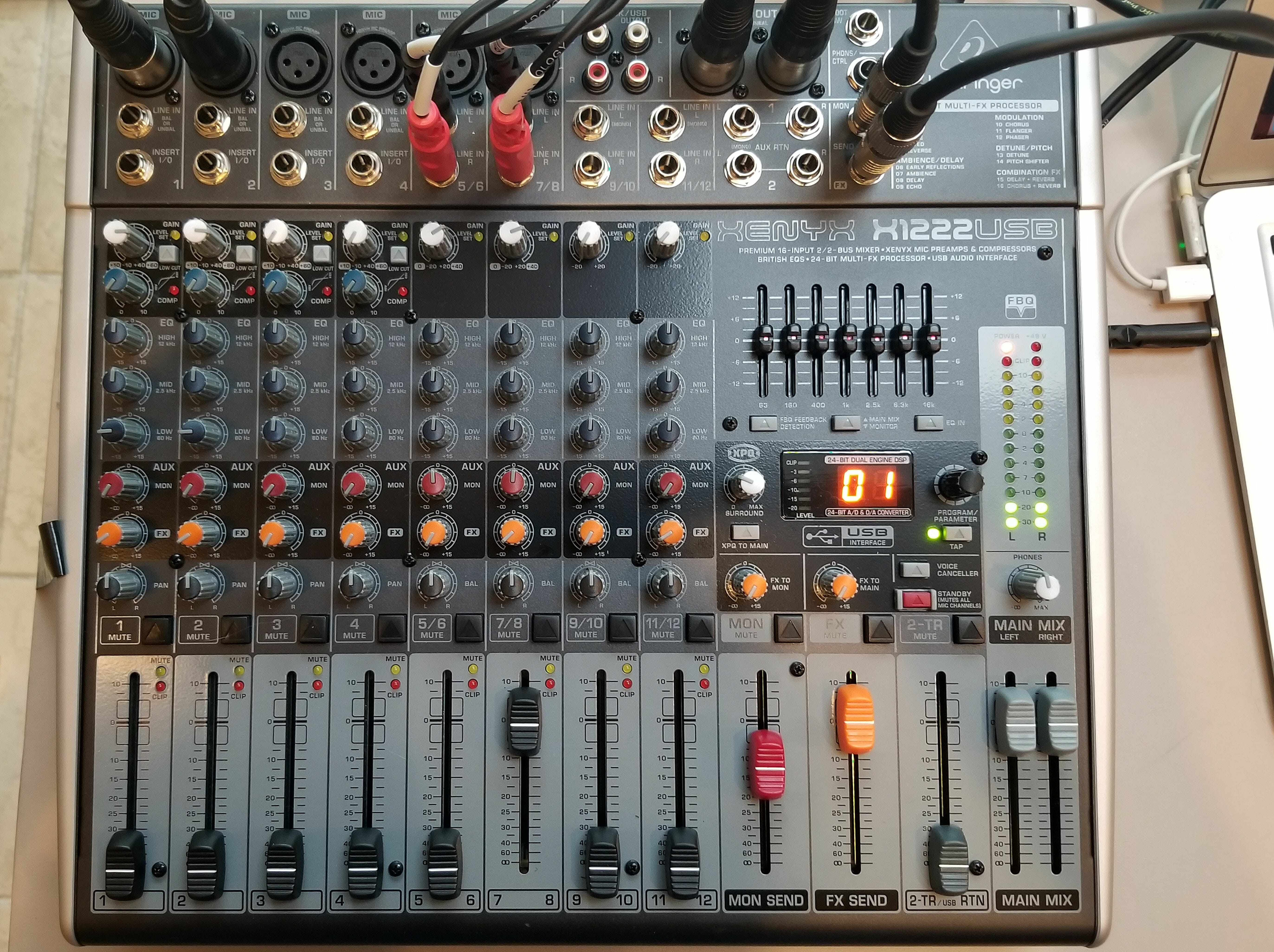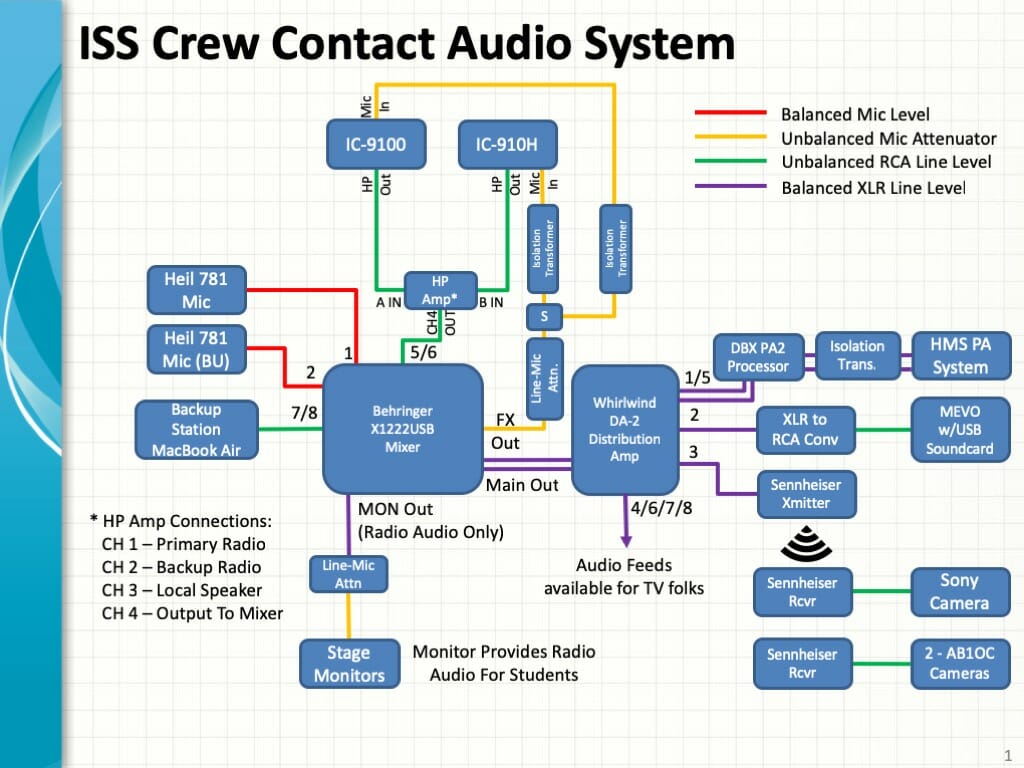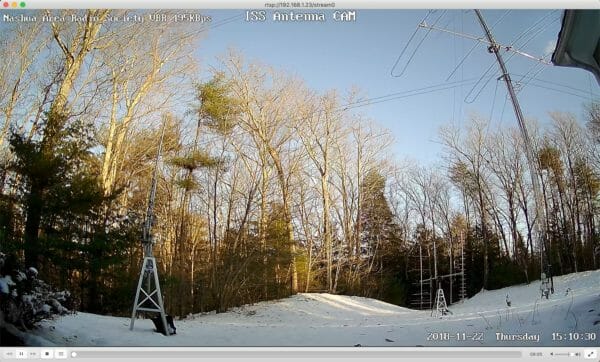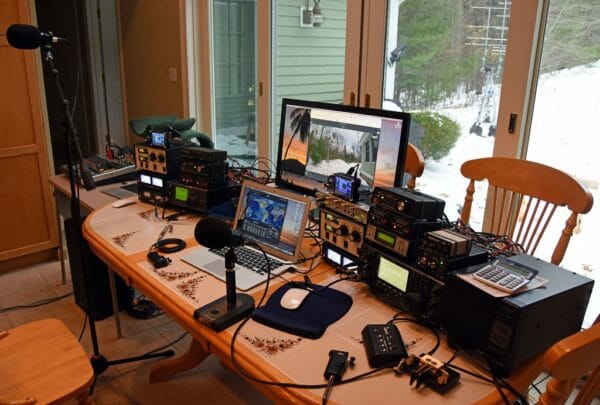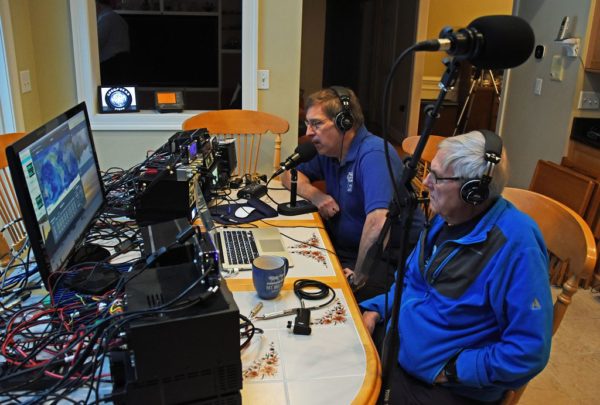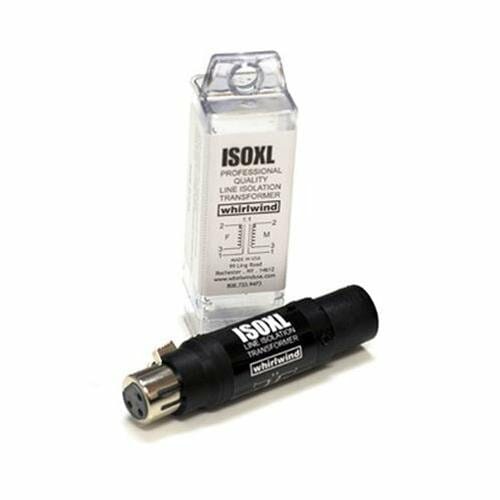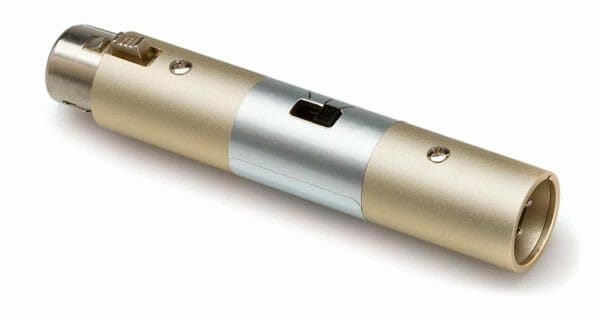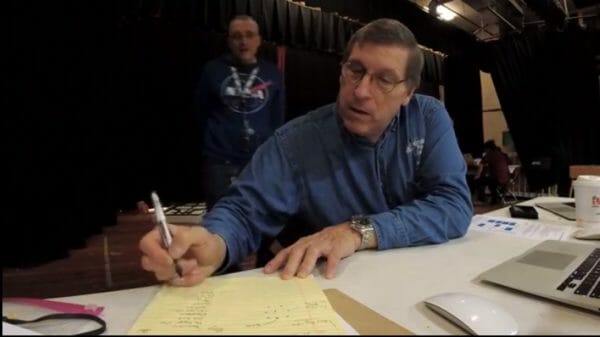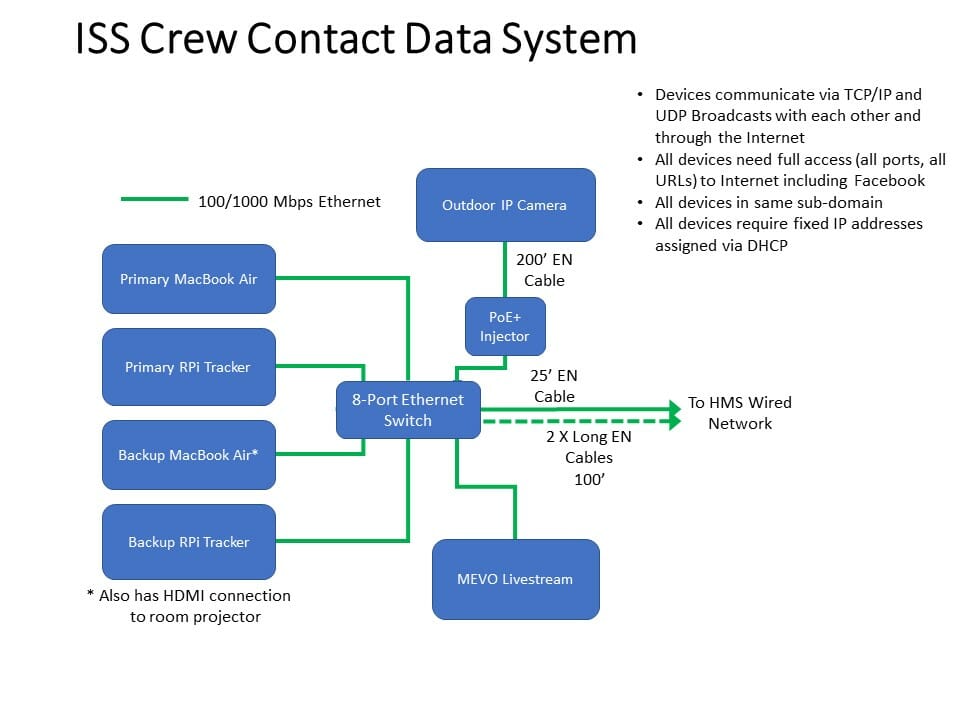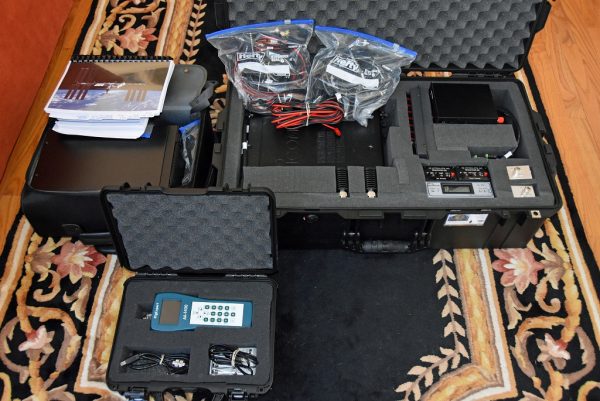On Sunday, December 2, 2018, at around 4:30 pm, Mackenzie Pooler (KE1NZY), a ten-year-old from Hudson, NH, turned in her Amateur Extra Exam to be graded by the VE team at the Nashua Area Radio Society’s testing session held at the Dartmouth Hitchcock campus in Nashua, NH. Only a year and a half before, you could have asked Mackenzie about amateur radio and she wouldn’t have been able to tell you the terms “diode,” “capacitor,” or “susceptance” meant, or any rules or regulations surrounding the FCC use of the amateur airwaves. In that short amount of time, Mackenzie’s passion for amateur radio and all that it entails was ignited to a point that she became inspired to pursue the highest licensing offered to an amateur.
Mackenzie or Kenzie as most in the amateur radio world know her, became interested in Amateur Radio because of my own pursuit of learning about Ham Radio as I prepared for the Hudson Memorial School ARISS contact. I studied for and passed all three levels of licensing in a two month period of time. As she saw my interest and excitement around amateur radio grow, she too became interested in getting licensed. Throughout 2018 she tagged along as we attended Kids Day on the radio at AB1OC and AB1QB’s QTH. While Kenzie did not want to talk on the radio, she became interested in both Morse Code and Fox Hunting at the event.
The Nashua Area Radio Society came to the Hudson Memorial School STEM Night on March 14, 2018, and Kenzie joined in on the fun. She came to the night to play math games with friends and family. By the end of the night, she was playing with the Morse Code Tutor kits and watching videos on Fox Hunting. Kenzie sat at the NARS table for over half an hour. At that point, she knew she wanted to pursue a Technician level license. Her opportunity to pursue her first license came shortly after the STEM Night when HMS and NARS announced that they would be offering their first student class one week in July. Mackenzie got a copy of the Technician Level class and began reading and studying the material.
The spring came and Mackenzie became invested in her other passion, softball. Mackenzie worked hard to become her team’s number two pitcher. The team had several weekends of tournaments that did not allow Kenzie to do much with amateur radio. The Nashua Area Radio Society held their Annual Field Day at Hudson Memorial School the same weekend at the Softball State Tournament. Even though the weekend was filled with games, Kenzie made sure we had time to stop by the field to see what was going on. Kenzie looked at all the antennas and equipment in amazement. She talked with many of the operators to understand what they were doing. Even though she did not have much time to spend with amateur radio during that weekend, she continued to study for the course.
July quickly came around and twelve students and educators sat through four days of Technician class material. Kenzie sat and listened to the material while finding ways to study. She enjoyed numerous demonstrations with the GOTA remote station, Fox Hunting, Morse Code activities, Antenna building, and more. Mackenzie was fully invested in learning how to do everything that the course had to offer. She spent nights practicing for the exam on a phone app and returned each day ready to go. At the end of the course, Mackenzie took her exam and found out that she passed. At that point, she was excited but really had no intention of getting any higher level license. She could Fox Hunt and play around with Morse Code, which is really what she wanted to do. She could even get a vanity call that mimicked her name; KE1NZY could be hers. It wasn’t until months later that her interest in a higher license would be realized.
In August, Mackenzie partook in her first RTTY Rookie Roundup. Using the club call sign, she was able to operate in all areas of the bands with no restrictions. She quickly took to digital operation as she didn’t have to say anything over the air to the other operators. Being a child of the digital age, it was second nature to use the computer to make contact. She became a pro at decoding call signs and her excitement grew. After that day, Mackenzie decided that she wanted to pursue her General License. Knowing that digital areas of operation of the bands allowed complete access to people with a General Level license gave her the internal drive to study the material. From August to the first week of October, Mackenzie studied the material on an app and with me. When the licensing exam was offered at the beginning of October, Mackenzie took the test and passed.
In the midst of her studying, Mackenzie attended the Boxboro, MA Hamfest. This was a first for both of us. Mackenzie enjoyed the NARS kit build of a Morse Code tutor and helped Fred Kemmerer and I present about building youth programs. Kenzie shared with the group her love of Morse Code, Fox Hunting, and digital contesting. Considering that she really doesn’t enjoy talking in front of people she doesn’t know, it was a great experience. She also loved building the Morse Code tutor kit so much that she was able to work as a mentor at the same activity during fall NearFest.
After gaining her General license, Kenzie toward to a new goal. She wanted to get her Extra license before she turned 11 in January. She began studying for the exam using apps but didn’t put too much time into it. At the end of October, Kenzie was asked by Anita AB1QB to use her call sign in the multi-op category of the JARTS RTTY contest. After learning that the contest exchange was the call sign and the person’s age, Mackenzie got very excited. The weekend of the contest, Mackenzie, Anita, and I operated. More than once, the other operators asked us to retransmit the age, thinking that the age of 10 was a mistake. Every time this happened, Mackenzie’s pride and excitement grew because she knew she was doing something not many young girls were involved in. She also knew that she may have been the only YL telling her true age.
At the beginning of November, Kenzie returned to the testing session of NARS trying to pass her Extra. In her first attempt in October, she had scored nine correct with no studying. During this session, she tried to pass the test twice. She failed at both attempts only scoring 25 and 27 correct. Yes, Kenzie was disappointed, but after a day of being upset, she decided she really wanted her Extra license. Unlike many kids her age, she turned her failure into a learning experience and put forth more effort towards success. We purchased a subscription to Ham Test online and worked out a time to be tutored by Fred, AB1OC.
Her want for success was further stoked when she competed in CQ Worldwide. For much of the competition, she logged for other operators. Toward the end of her operating time, she was offered the chance to make an SSB contact with Ducie Island. With coaching, she went through with making the contact. The contact was a success and she was proud of herself for getting a rare DX as her first voice contact. With the newfound self-esteem due to the Ducie Island connection, Kenzie began operating in the CQ Worldwide contest as the operator. She became bummed because she could see prefixes and countries she needed for multipliers operating in an area of the band she could not access with only a General license. At the end of her operating time, she knew she had to pass Extra because she didn’t want to be limited anymore.
Sitting and waiting for her test to be scored on that day was exciting, nerve-racking, and seemed like it took forever, and that was just my thoughts. Kenzie sat rethinking all of her answers. She was nervous that she would fail once again and have to wait until February for her next chance to pass. Never once did she sit and think about the fact that she was a child attempting to pass a test in a room filled with adults. She was not worried about disappointing her mother or me because, at one point in her studying, we had already talked about her reasons for taking this test. She had come to the conclusion that she was doing this for her and no one else. She knew that we loved her and we’re proud of her for attempting to do something few ten-year-old girls had done.
When Mackenzie was told that she passed, her face brimmed ear to ear with the biggest smile. Kenzie had set a goal for herself and accomplished it. She used the assistance of all those that helped her study: the tutoring sessions, the NARS Extra Class, and all of the experiences contesting to pass the test. With passing, she became the youngest member that NARS had ever successfully assisted in gaining her Extra License. In Kenzie’s own words, now she can go on any band without worry. She also hopes that she can inspire others to become interested in and licensed as Ham radio operators.
Since getting her license, Kenzie was a part of Hudson Memorial School’s ARISS contact. She was able to ask NASA Astronaut Serena Aunon-Chancellor how long she had been licensed and what she used her license for besides ARISS contacts. Before her contact, she proudly stated her call sign before an audience of over 1,000 people. Since the contact, other students have come forward interested in Ham Radio because if she, the youngest student questioning the astronauts, could get a license then they knew they could do the same.
Dan, AC1EN

